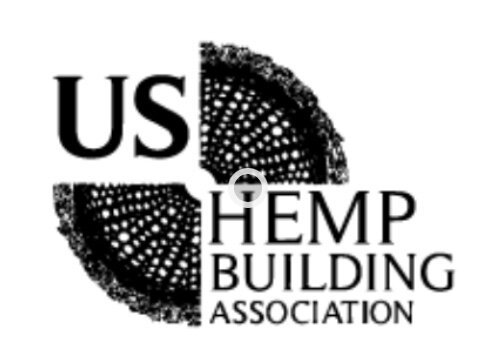$630K Grant For Hempcrete Tribal Housing
Indigenous Habitat Institute founder Lisa Sundberg (right) poses in 2022 with board member Peter Holmdahl in front to a Paris apartment building insulated with hemp-lime (hempcrete). Photo courtesy of Lisa Sundberg
By Jean Lotus
The Trinidad, CA-based Indigenous Habitat Institute (IHI) will use grant awards of close to $630,000 to build the supply chain for hemp-lime tribal housing and start a workforce training program for a hemp-lime (“hempcrete”) panel factory, the organization announced.
IHI is partnering with the local College of the Redwoods as sub-recipients of Oregon State University’s Global Hemp Innovation Center’s $10 million grant from the U.S. Department of Agriculture’s National Institute of Food and Agriculture (NIFA).
The company will start with a transfer of 100+ years of hempcrete industry knowledge and technologies “from France to Turtle Island (North America),” said IHI founder Lisa Sundberg.
Hemp-lime based insulation has been EU-approved for years and is used in France to build multi-story apartment bindings and large-scale commercial projects. Sundberg’s group will use about $330K of the grant funds to work with commercial testing labs at OSU to create test data needed to meet US building standards.
“There’s so much data out there, but everybody’s in silos,” Sundberg observed.
The College of the Redwoods collaboration will spend about $300K to help train a workforce to build and install hemp-lime panel systems, Sundberg said.
Soil to Turnkey
Sundberg views the “soil to turnkey” introduction of hemp building materials in the United States as an “industry lift” puzzle that draws on her previous experience in the roll-out of tribal gaming and tribal healthcare delivery during the COVID era. A “triple helix” partnership between universities, local municipalities and private companies is what can bring the supply chain up to speed, she said.
The California housing shortage on tribal lands is in crisis, Sundberg said, and hempcrete is a solution that works on multiple impact levels.
Internationally approved hemp-lime is a highly energy efficient, fire-retardant, mold/pest resistant, carbon-negative, renewable and hyperlocal material.
“Hempcrete is the solution for the critical things happening in our own backyard: We have wildfires. We have severe mold problems where I live. And the utilities in California are through the roof,” she said. Additionally, hemp-lime’s carbon sequestering properties can help meet California’s new embodied carbon construction laws in California.
The IHI will also work with insurance companies to “lower rates on structures built with hempcrete, due to its fire-retardant properties,” the group said.
Incorporating Hemp
OSU’s Global Hemp Innovation Center seeks to incorporate industrial hemp into “existing agricultural and business landscapes,” Director Jeffrey Steiner told HempBuild Mag. “We listen to industry,” Steiner said. With team members embedded in the existing agricultural, wood and fiber industries, “If you could just slip another plant in there you get way more traction,” Steiner added.
Thirteen Pacific Northwest Native American Tribes across six states will take part in this 5-year program to develop methods for “processors to analyze the physical properties of materials and to set standards for their use in construction, biopolymer composites, packaging and textiles, according to the grant documents.
“Our tribes are a major portion of the landscape in [Pacific Northwest] rural communities,” Steiner said. When surveyed, all 13 tribes who will be cooperating with the NIFA grant identified housing as a tribal priority.
“What the OSU grant is doing is really providing us a roadmap with how tribes might work together,” IHI Board Member Peter Holmdahl told Tribal Business News. “One tribe might have the land to grow hemp, another might have access to timber - it's a great opportunity.”
Founding the IHI in 2021, Sundberg forged connections in France with the construction companies and architects who are designing large-scale hempcrete-insulated buildings in the EU. The time is right to bring this technology to the United States, especially since hemp-lime made its first appearance in the International Code Council’s International Residential Codes for the first time this spring, she said.
Sundberg was elected recently to the US Hemp Building Association Executive Board. She said she sees the hemp plant through the indigenous metaphor of the “Green Buffalo,” a plant that can supply food, housing and clothing.
“I found hempcrete, and industrial hemp wasn’t even legal at the time I learned about it, and I'm like, look at all this magic this damn thing does!” she said. “It's been a love affair since that point.”
Please Support Our Classified Advertisers
(To find out more about advertising CLICK HERE).
Help Wanted:
Publications
Hemp Building Directory 2024 - Guide to the International Hemp Building Industry
“Hemp Buildings - 50 International Case Studies” by Steve Allin
Green Builders
Build your hempcrete dream house in Austin, TX with Gradek Contracting and Design
8th Fire Innovations: 15 Years of Hemp Building in Alberta, Canada. Home of the Divita Block System
Experienced Natural Building Engineering Services from Verdant Structural Engineers, CA
Natural Materials Design at Plural Office Architects, Austin TX
Hemp Building Research and Training
Enrolling now Hemp Build School Masterminds online and IRL for Homeowners and Professionals
Hemp Hurd (shivs)/Hemp Fiber/ Hemp Microfiber
Your Hemp Agricultural Solutions: Whitefield Global Holdings
Grown in USA: Hemp and Fiber specialists at Complete Hemp Processing
Hemp Building Supplies, No Order Too Small. Hemp Traders, Los Angeles
Hempcrete installers/Insulation subcontractors
Hemp Build Network: We Make Building with Hemp Possible, New Braunfels, TX
Hemp Building Company: Hempcrete installation, supplies Lafayette, CO
Design and build your Hempcrete home with HempStone LLC complete consultants
Lime Binder
Hemp Batt Insulation/Supplies
Hemp Wall Panel Products
Preorder your hempcrete tiny house from Sativa Building Systems
Panel solutions from Homeland Hempcrete
Hemp Blocks
Financial Services:
Professional Associations































